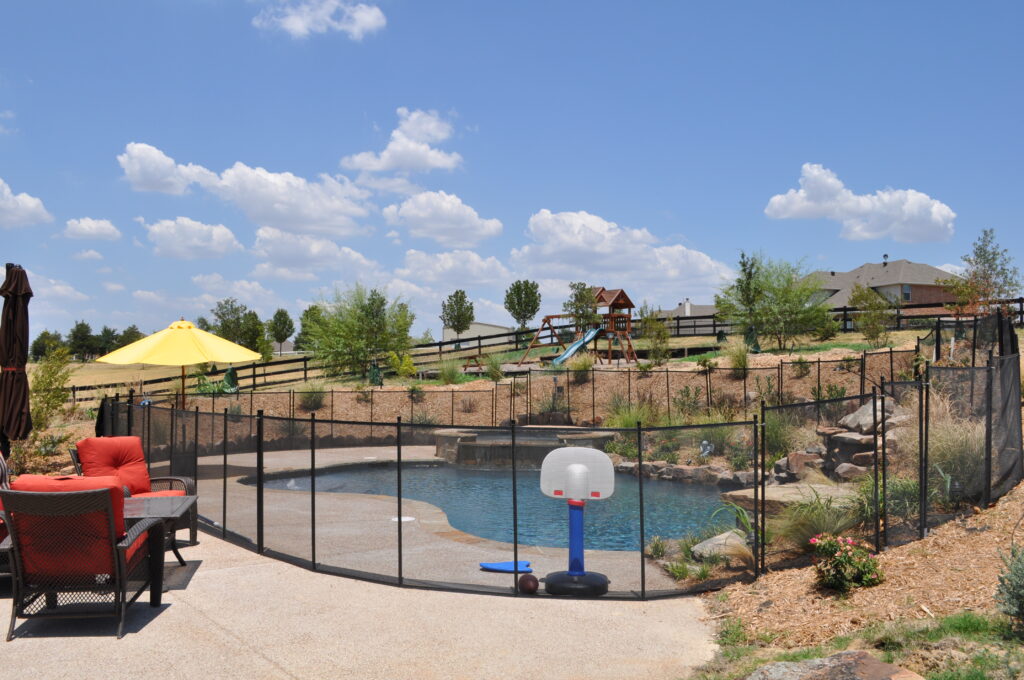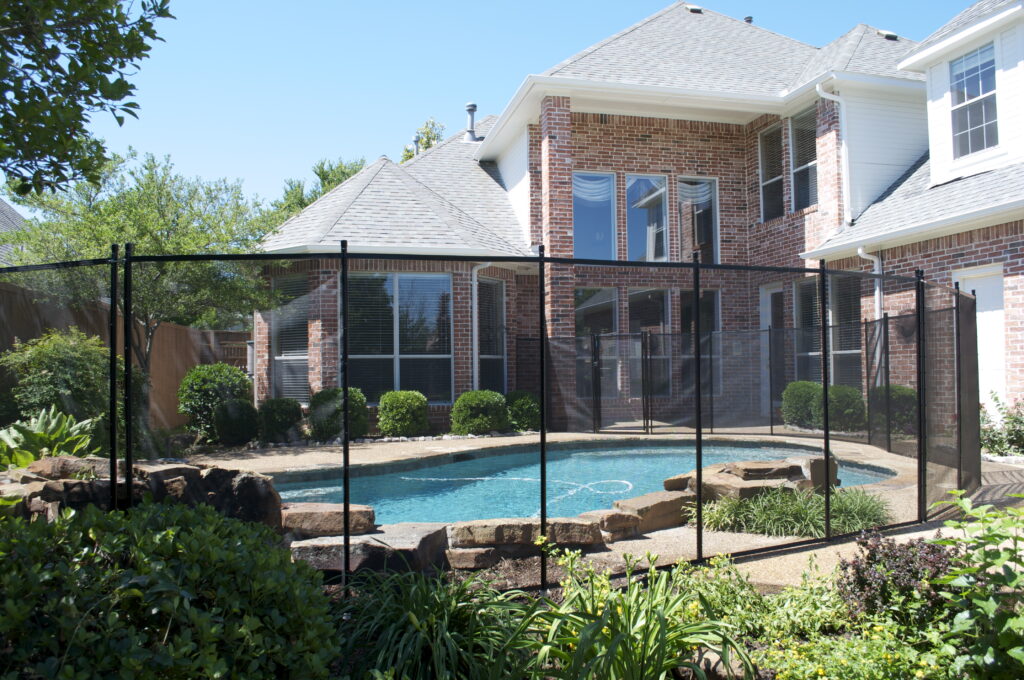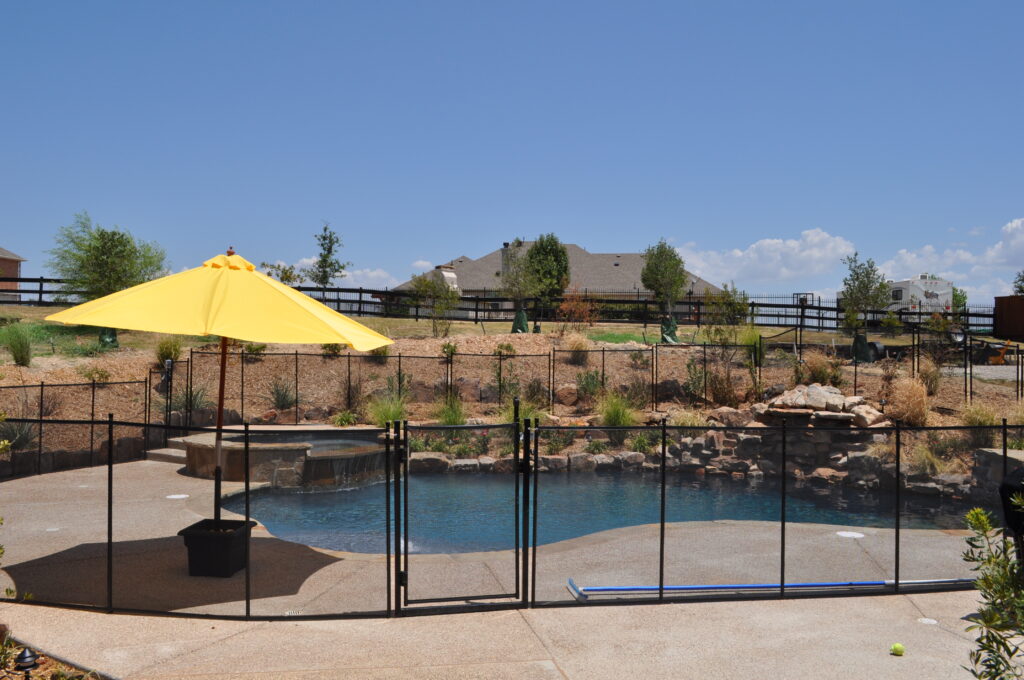Living in San Diego means you get to enjoy pool weather practically all year long. Sunny afternoons, backyard barbecues, and family swim time are part of the lifestyle here. But when it comes to owning a pool, there’s one thing many new homeowners overlook, and that’s the pool fence.
A pool fence is a safety barrier, a legal requirement, and a lifesaver for children, pets, and guests. Unfortunately, many new homeowners make preventable mistakes that lead to failed inspections, fines, or serious accidents.
Here, we’ll break down the most common pool fence mistakes San Diego homeowners make and how to avoid them before the very start.

In San Diego, installing a pool without a compliant fence can lead to hefty fines or even denied occupancy. That’s because California law requires all residential pools to be enclosed by a barrier that meets strict safety standards. More specifically, all homeowners who own a pool in San Diego need to enclose the pool with:
On top of that, San Diego County enforces additional pool barrier codes that inspectors take seriously. If your fence doesn’t pass, you’ll likely be required to fix or replace it before you can legally use your pool.
San Diego is known for its coastal breeze, salty air, and sunny skies. While that’s great for pool days and endless fun, it can be harsh on the fencing materials.
Many homeowners mistakenly choose cheap metal or untreated wood, only to find their fence rusting, warping, or fading within months. If you live in areas like La Jolla, Pacific Beach, or Ocean Beach, you need a fence that can stand up to coastal conditions.
Thinking of installing a mesh pool fence in San Diego is more than ideal. It’s:
While glass or basic aluminum may look sleek at first, they are not the ideal choice. Over time, wear and tear will depreciate the look of your backyard. What about your glass pool fence when it comes in constant contact with chlorine and salt? Chlorine in combination with salt could discolour glass, ruining the aesthetics.
It’s tempting, right? You’ve just finished designing your dream backyard, and now it’s time to install the pool fence. So, you figure, why not hug it close to the pool or squeeze it along the edge of the property line to save space?
That’s one of the most common and costly mistakes new San Diego homeowners make.
San Diego zoning laws often require fences to be set a certain distance away from property lines. If you don’t follow those rules, your fence could be flagged during inspection, or worse, you might have to move it entirely.
Before digging post holes, always verify your property lines, review local pool enclosure codes, and account for access paths, equipment space, and landscape design.
It’s easy to overlook the details, but pool safety laws in California (and San Diego County) don’t play around when it comes to gates. Local inspectors are trained to check everything. And yes, they’re measuring down to the inch.
Here’s what they’re looking for:
If any of those details are off, even by a little, your fence might not pass inspection. And worse, your pool won’t be legally safe for use.
Now here’s where it gets real: even a well-installed fence can fail if the pool fence is not properly maintained. A gate that stays cracked open, even slightly, defeats the whole point of having a fence in the first place.

We get it, you want your backyard to look great. And yes, a glass pool fence can make the space feel modern and open. But when it comes to pool safety in San Diego, looks shouldn’t be the only factor guiding your decision.
Glass fencing might look sleek on day one, but it doesn’t always age well. The salty coastal air and chlorine can etch, stain, and fog the panels. Plus, glass requires constant cleaning, especially if you live near the beach. Over time, it can lose its clarity and even loosen if not installed correctly.
If safety and durability are your top priorities, UV-resistant mesh fencing offers better visibility, airflow, and long-term reliability. It’s safer, easier to maintain, and blends into most landscapes without sacrificing aesthetics.
When it comes to meeting San Diego pool safety standards, DIY often causes more problems than it solves. A lot can go wrong: posts end up crooked, spacing is off, or the gate doesn’t latch properly. If your backyard has soft soil, pavers, or uneven slopes, proper anchoring becomes even trickier.
Worse, a fence that looks good to the eye might still fail city inspection. And if it doesn’t pass, you could face delays, redo costs, or even be denied pool use until it’s fixed.
So, unless you’re a pool safety expert, skip the DIY route. Hire pros who will get it right the first time, saving you time, money, and stress.
Even the best pool fences need upkeep, especially in San Diego’s sun-soaked, salt-touched climate. It’s easy to assume that once your fence is installed, you’re good to go. But ignoring regular maintenance is a fast track to issues.
UV rays can fade your mesh. Salt in the air can corrode hardware. And over time, posts can loosen, latches can wear out, and removable fences can sag or shift if not reinstalled properly.
The good news? Maintenance doesn’t have to be complicated.
Every month or so, take a few minutes to:
Spring and summer are the busiest times for pool use, so check everything before the season kicks off. A little effort goes a long way toward keeping your fence safe, legal, and looking great all year.

From choosing the wrong materials to underestimating gate regulations, the most common pool fence installation mistakes in San Diego are usually the easiest to prevent if you know what to look for. Whether you live near the coast or inland, one thing remains true: your fence needs to be more than just attractive; it needs to be secure, durable, and 100% code-compliant.
By understanding local laws, respecting climate challenges, and working with professionals who specialize in San Diego pool fence requirements, you can avoid costly repairs and failed inspections.
Please fill out the form below with your information. Your local dealer will be notified about your inquiry.
Please fill out the form below with your information. Your local dealer will be notified about your inquiry.